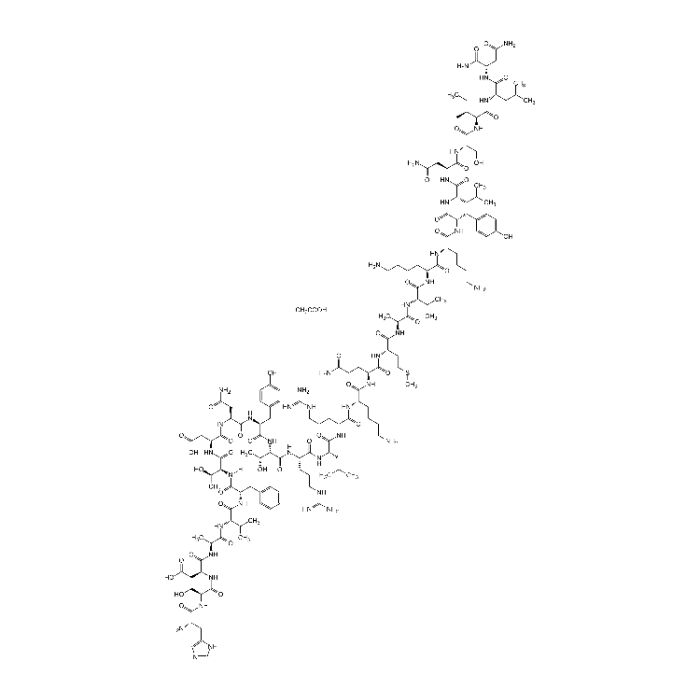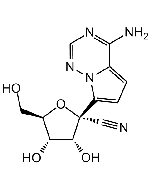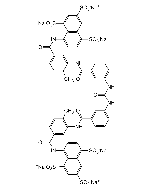Cookie Policy: This site uses cookies to improve your experience. You can find out more about our use of cookies in our Privacy Policy. By continuing to browse this site you agree to our use of cookies.
AdipoGen Life Sciences
VIP (human, mouse, rat) . acetate [RLF-100]
As low as
90
CHF
CHF 90.00
In stock
Only %1 left
AG-CP3-0041-M0011 mgCHF 90.00
AG-CP3-0041-M0055 mgCHF 210.00
AG-CP3-0041-M02525 mgCHF 430.00

| Product Details | |
|---|---|
| Synonyms | Aviptadil; HSDAVFTDNYTRLRKQMAVKKYLNSILN-NH2; Vasoactive Intestinal Peptide; Vasoactive Intestinal Octacosapeptide |
| Product Type | Chemical |
| Properties | |
| Formula |
C147H238N44O42S . C2H4O2 |
| MW | 3325.8 . 60.1 |
| Sequence |
H-His-Ser-Asp-Ala-Val-Phe-Thr-Asp-Asn-Tyr-Thr-Arg-Leu-Arg-Lys-Gln-Met-Ala-Val-Lys-Lys-Tyr-Leu-Asn-Ser-Ile-Leu-Asn-NH2 |
| CAS | 1444827-29-5 | 40077-57-4 (free base) |
| Source/Host Chemicals | Synthetic. |
| Purity Chemicals | ≥98% (HPLC) |
| Appearance | White to off-white lyophilized powder. |
| Solubility | Soluble in water or aqueous solution (1% AcOH) (1mg/ml). |
| Crossreactivity |
Human Mouse Rat |
| InChi Key | ZPFJSONBPCXUTA-KAZBKGEHSA-N |
| Smiles | O=C([C@H]([C@@H](C)CC)NC([C@H](CO)NC([C@H](CC(N)=O)NC([C@H](CC(C)C)NC([C@H](CC(C=C1)=CC=C1O)NC([C@H](CCCCN)NC([C@H](CCCCN)NC([C@H](C(C)C)NC([C@H](C)NC([C@H](CCSC)NC([C@H](CCC(N)=O)NC([C@H](CCCCN)NC(C(CCCNC(N)=N)NC([C@H](CC(C)C)NC([C@H](CCCNC(N)=N)NC([C@H]([C@@H](C)O)NC([C@H](CC(C=C2)=CC=C2O)NC([C@H](CC(N)=O)NC([C@H](CC(O)=O)NC([C@H]([C@@H](C)O)N([H])C([C@H](CC3=CC=CC=C3)NC([C@H](C(C)C)NC([C@H](C)NC([C@H](CC(O)=O)NC([C@H](CO)NC([C@H](CC4=CN=CN4)N)=O)=O)=O)=O)=O)=O)=O)=O)=O)=O)=O)=O)=O)=O)=O)=O)=O)=O)=O)=O)=O)=O)=O)=O)=O)N[C@H](C(N[C@H](C(N)=O)CC(N)=O)=O)CC(C)C.CC(O)=O |
| Shipping and Handling | |
| Shipping | AMBIENT |
| Short Term Storage | +4°C |
| Long Term Storage | -20°C |
| Handling Advice | Keep cool and dry. |
| Use/Stability | Stable for at least 2 years after receipt when stored at -20°C. |
| Documents | |
| MSDS |
 Download PDF Download PDF |
| Product Specification Sheet | |
| Datasheet |
 Download PDF Download PDF |
Description
- Vasoactive intestinal peptide (VIP) is a 28 aa peptide that belongs to secretin-glucagon-CRF superfamily, the ligand of class II G protein-coupled receptors subclass B1. VIP binds to the receptors VPAC1, VPAC2 and with less sensitivity to PAC1, which trigger a G-α-mediated signaling cascade, eventually activating adenyl cyclase leading to increases in cAMP and PKA. The PKA then activates other intracellular signaling pathways like the phosphorylation of CREB and other transcriptional factors. The VIP receptors are widely expressed in brain, liver, lung, pancreas, skeletal muscle, heart, kidney, adipose tissue, testis and stomach and also abundantly in immune cells. Although first identified in the intestinal tract, VIP is now known to be produced throughout the body, but primarily concentrated in the lungs, bound to the alveolar type II cell type, which is critical for the transmission of oxygen to the body.
- The widespread distribution of VIP correlates with its involvement in a wide variety of biological activities including vasodilation, bronchodilation, hyperglycaemia, neuroprotection, inflammation, autoimmunity, cancer and hormonal regulation. VIP has multiple physiological and pathological effects on development, growth, and the control of neuronal, epithelial and endocrine cell functions that in turn regulate ion secretion, nutrient absorption, gut motility, glycemic control, carcinogenesis, immune responses and circadian rhythms. VIP is a antiproliferative, anti-inflammatory and immune-regulatory peptide. As anti-inflammatory agent it acts by inhibiting phagocytic activity, free radical production, adherence and migration of macrophages. It reduces the production of inflammatory cytokines (TNF-α, IL-12, IL-6 and IL-1β) and various chemokines and downregulates the expression of inducible nitric oxide synthase.
- VIP is expressed in airway epithelial cells, secretory glands, immune and inflammatory cells. It functions as a neuroendocrine hormone and putative neurotransmitter. It stimulates neuronal survival and modulates glycogen metabolism. VIP blocks mitogen-activated proliferation of T cells by preventing interleukin-2 production. It promotes electrolyte secretion and provides protection against oxidant injury. VIP has especially potent anti-inflammatory activity in animal models of respiratory distress, acute lung injury and inflammation. VIP has been used in clinical trials for sarcoidosis, pulmonary fibrosis, asthma/allergy, and pulmonary hypertension.
- VIP (RLF-100; Aviptadil) provides rapid respiratory failure reduction in clinically ill patients with COVID-19 and blocks replication of the SARS-CoV-2 virus in human lung cells and monocytes. Therefore it is being investigated in clinical trials for the treatment of Acute Respiratory Distress Syndrome (ARDS) in COVID-19. COVID-19-related death is primarily caused by respiratory failure induced by early viral infection of the alveolar type 2 cells. These cells are known to have angiotensin-converting enzyme 2 (ACE2) receptors at high levels, which serve as the route of entry for the SARS-CoV-2 into the cells. The same type 2 alveolar cells have high concentrations of VIP receptors on their cell surfaces giving rise to the hypothesis that VIP could specifically protect these cells from injury. Interestingly alveolar type 2 cells produce a surfactant that coats the lung and is essential for oxygen exchange and RLF-100 specifically targets these vulnerable alveolar type 2 cells.
Product References
- VIP as a modulator of lung inflammation and airway constriction: S.I. Said; Am. Rev. Respir. Dis. 143, S22 (1991) (Review)
- The control of fluid-secreting epithelia by VIP: S.C. Martin & T.J. Shuttleworth; Ann. N. Y. Acad. Sci. 805, 133 (1996) (Review)
- Pathways of inflammation and cell death in the lung: modulation by vasoactive intestinal peptide: S.I. Said & K.G. Dickman; Regul. Pept. 93, 21 (2000) (Review)
- Immunology of VIP: a review and therapeutical perspectives: R.P. Gomariz, et al.; Curr. Pharm. Des. 7, 89 (2001) (Review)
- VIP as a trophic factor in the CNS and cancer cells: T.W. Moody, et al.; Peptides 24, 163 (2003) (Review)
- VIP: a very important peptide in T helper differentiation: M. Delgado; Trends Immunol. 24, 221 (2003) (Review)
- Therapeutic approaches of vasoactive intestinal peptide as a pleiotropic immunomodulator: E. Gonzalez-Rey, et al.; Curr. Pharm. Des. 13, 1113 (2007) (Review)
- Anti-inflammatory neuropeptides: a new class of endogenous immunoregulatory agents: M. Delgado & D. Ganea; Brain Behav. Immun. 22, 1146 (2008) (Review)
- VPAC and PAC receptors: From ligands to function: L. Dickson & K. Finlayson; Pharmacol. Ther. 121, 294 (2009) (Review)
- Therapeutic potential of VIP vs PACAP in diabetes: A.D. Sanlioglu, et al.; J. Mol. Endocrinol. 49, R157 (2012) (Review)
- VIP in neurological diseases: more than a neuropeptide: M. Morell, et al.; Endocr. Metab. Immune Disord. Drug Targets 12, 323 (2012) (Review)
- The neuropeptide vasoactive intestinal peptide: direct effects on immune cells and involvement in inflammatory and autoimmune diseases: D. Ganea, et al.; Acta Physiol. 213, 442 (2015) (Review)
- The effects of vasoactive intestinal peptide in neurodegenerative disorders: G. Deng & L. Jin; Neurol. Res. 39, 65 (2017) (Review)
- Recent advances in vasoactive intestinal peptide physiology and pathophysiology: focus on the gastrointestinal system: M. Iwasaki, et al.; F1000Res. 8, Rev-1629 (2019) (Review)
- Brief Report: Rapid Clinical Recovery from Critical COVID-19 with Respiratory Failure in a Lung Transplant Patient Treated with Intravenous Vasoactive Intestinal Peptide: J.G. Youssef, et al.; (Preprint) (2020)
- Rapid Recovery from COVID-19 Respiratory Failure with Comorbidity in 21 Patients Treated with Vasoactive Intestinal Peptide: J.G. Youssef, et al.; SSRN Online (2020)
- The neuropeptides VIP and PACAP inhibit SARS-CoV-2 replication in monocytes and lung epithelial cells, decrease the production of proinflammatory cytokines, and VIP levels are associated with survival in severe COVID-19 patients: J.R. Temerozo, et al.; bioRxiv (Preprint) (2020)










